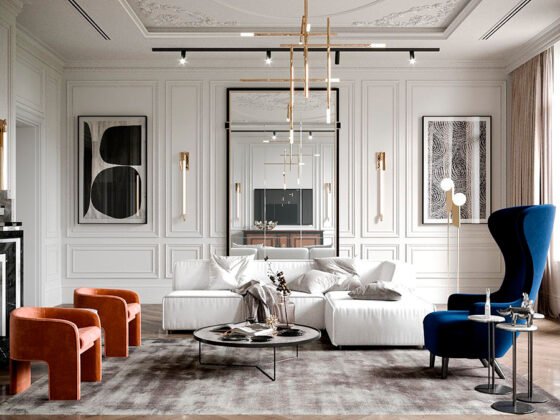The practice of sustainable interior design demonstrates a genuine dedication to preserving the environment. In the realm of interior design, sustainability encompasses numerous facets of a project, aiming to deliver enduring, high-quality designs that have minimal environmental impact, waste, and pollution. An interior design business commitment to sustainability takes great care in selecting building materials that are environmentally friendly, while also considering long-term cost-saving solutions and the well-being of the client.
The significance of sustainability in interior design can be understood through the following points:
- Use of Sustainable Materials: Designers now consider the life cycle and long-term environmental impact of materials. They carefully assess the impact throughout all stages of production and disposal of sustainable construction materials.
- Growth of Sustainable Concept: The importance of sustainable materials plays a pivotal role in project planning. Architects and interior designers strive to promote this concept worldwide, recognizing sustainability as an essential path for everyone.
- Global Environmental and Psychological Impact: Sustainable materials age alongside us, becoming significant elements of our own history. They hold stories and bring about a powerful sense of doing good, influencing our mindset and daily life choices.
Materials that are beneficial for both individuals and the environment include:
- Recycled steel: By using recycled steel, we can significantly reduce energy consumption, waste, and emissions associated with extracting iron ore, coal, and limestone. For instance, creating a steel can from recycled materials requires 75% less energy than producing it from raw materials.
- Sheep’s wool: It serves as a sustainable and rapidly renewable resource.
- Plant-Based Polyurethane Rigid Foam: Manufactured from materials like kelp, hemp, and bamboo, this foam finds application in insulation and furniture.
- Reclaimed wood: Choosing reclaimed wood decreases the demand for newly sourced materials.
- Bamboo: With its rapid growth cycle of 3-5 years, bamboo is an eco-friendly, antibacterial, and 100% biodegradable option if not chemically processed.
- Hempcrete or Hemplime: Combining hemp shiv, lime, and water, this concrete-like material is strong, durable, flexible, breathable, mold-proof, and fire-resistant. It is calculated, that hempcrete homes have a carbon-negative impact, removing more CO2 from the atmosphere during construction and the building’s lifetime.
- Cork: Only the bark is harvested from the cork tree, allowing it to continue growing without being cut down.
- Straw bales: They require minimal energy for production and are a renewable resource.
- Organic Cotton: Grown without pesticides, herbicides, or chemical fertilizers, organic cotton offers both health and environmental benefits.
- Felt: Produced by matting, condensing, and pressing fibers together, felt is a low-impact and completely biodegradable material used in making drapes and furniture.
- Jute: With a growth period of 4-6 months, jute serves as an efficient and renewable material. Similar to bamboo, it absorbs carbon dioxide and releases oxygen at a faster rate than trees, making it commonly used for rugs.
- Stone: Natural, sustainable material that can be used for flooring, walls, and surfaces. Many types of stone are available, each with unique character and properties, making it a versatile and eco-friendly choice for interior designers. Though marble is a commonly used material in interior design, it is important to acknowledge the sustainability concerns certain types of marble due to the extensive harvesting and limited availability. The extraction of marble can have significant environmental impacts, including deforestation, habitat destruction, and carbon emissions. Furthermore, the quantity of high-quality marble is finite, making it crucial to consider alternative options for sustainable interior design. Designers can explore innovative substitutes like engineered quartz, recycled glass, or porcelain tile that mimic the look and feel of marble while reducing the strain on natural resources.
One of the key aspects of sustainable interior design is the incorporation of recycled materials. By using recycled materials, designers can minimize the demand for new resources and reduce the environmental impact associated with raw material extraction and production. Incorporating items such as recycled steel, reclaimed wood, and repurposed textiles, glass and even plastic – not only diverts waste from landfills but also reduces the energy consumption and emissions typically associated with the manufacturing of new materials. Moreover, incorporating recycled materials adds a unique character and story to the design, creating a sense of authenticity and environmental consciousness. By choosing recycled materials, interior designers can play a significant role in the circular economy, promoting resource conservation and creating a more sustainable future.











